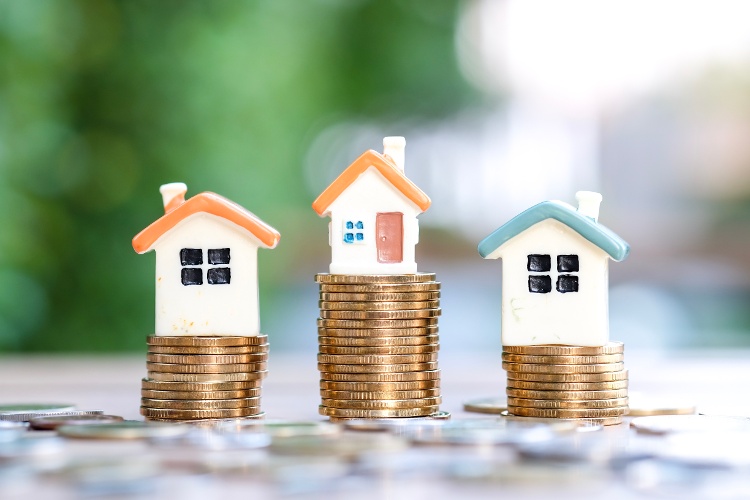The Gross Rent Multiplier (or GRM) is an easy, back-of-the-envelope method of estimating the value of income-producing real estate. Also known as the GIM or Gross Income Method, calculating the gross rent multiplier allows investors to quickly rank potential investment properties based on rental income.
GRM is also a calculation that can be used in a quickly changing rental market. It provides a good first look at whether a rental property will be profitable or unprofitable as market conditions change.
In this article we’ll look at different ways real estate investors can use GRM, how to create a GRM grading scale, and the pros and cons of using the gross rent multiplier to evaluate potential rental property investments.
What is The Gross Rent Multiplier?
The gross rent multiplier (GRM) compares the gross annual rental income to the fair market value of a property. Because the gross rent is used, GRM doesn’t factor in normal operating expenses or debt service.
GRM is a simplified way to analyze the value of rental property using the income approach. For example, a real estate investor looking at the Roofstock Marketplace can quickly and easily determine the gross rent multiplier of the various single-family rental homes for sale in various markets.
However, the gross rent multiplier isn’t meant to be a substitute for an in-depth analysis of property value. Instead, calculating the GRM lets you know at first glance whether or not a property is worth taking the additional time and effort to analyze in detail.

How to Calculate GRM
Here’s the formula to calculate a gross rent multiplier:
- Gross Rent Multiplier = Property Price / Gross Annual Rental Income
- Example: $500,000 Property Price / $42,000 Gross Annual Rents = 11.9 GRM
The GRM calculation compares the property’s asking price or fair market value to the gross rental income. Using the gross rent multiplier is a good way to take a “quick look” at how fast the property will be paid off from the gross rent the investment is generating.
In this example, the payoff period is just under 12 years. However, keep in mind that expenses such as routine repairs, vacancy from unit turns, and property taxes and insurance aren’t included in this calculation. That’s because the GRM formula uses gross rent and not NOI.

Examples of When The GRM Formula is Used
In the above example, the GRM formula was used to calculate the gross rent multiplier.
The gross rent multiplier calculation can also be used in two other ways:
- Determine fair market value based on gross rent and GRM for comparable properties in the same market.
- Calculate what the gross rents should be based on the market GRM and purchase price.
Let’s take a look at the two other ways to use the GRM formula.
Using GRM formula to determine fair market value
To determine a property’s fair market value, you need to know what the GRM is for comparable properties in the same market, and what the gross rent is or, if the property is vacant, what the gross rents are projected to be.
- GRM = Property Price / Gross Annual Rental Income
- Property Price = Gross Annual Rental Income x GRM
- Example: $42,000 Gross Annual Rental Income x 11.9 GRM = $499,800 (round up to $500,000)
Using GRM formula to calculate gross rent
Now let’s use the GRM formula to calculate what the gross rent should be. For this calculation, you need to know the fair market value of the property and what the GRM is for comparable properties in the same market.
- GRM = Property Price / Gross Annual Rental Income
- Gross Annual Rental Income = Property Price / GRM
- Example: $500,000 Property Price / 11.9 GRM = $42,016 (round down to $42,000)

How to Create a GRM Grading Scale
When you invest in a rental property you are purchasing an income-producing investment and the income stream the property generates. While a lower GRM may generate enough income to pay off a property faster, investors should also consider the age of the property and the potential for higher maintenance costs.
An older property with a low GRM may appear to be a good deal. However, if there is a lot of maintenance work that needs to be done, vacancy may be higher which in turn creates a lower cash flow and a higher GRM.
That’s why it’s useful to develop a GRM grading scale for your market like this:
- Low GRM = old property with deferred maintenance or in need of major capital repairs such as roof replacement, or new heating and cooling system.
- Average GRM = property built within the last 10 or 20 years in need of updating such as energy efficient windows, replacement of appliances, or exterior painting.
- Above Average GRM = property built within the last 10 years that only requires routine maintenance to maintain property value and keep rents at market.
- High GRM = brand new property with lower routine maintenance expense with new appliances and state-of-the-art electrical, plumbing, and HVAC systems.
Developing a GRM grading scale for your market lets you use the gross rent multiplier calculation to balance the risk between property age and potential for increased maintenance expense.
In addition to property age, you can also factor in the Roofstock neighborhood ranking to compare GRMs of properties located in the same area.
What is a Good Gross Rent Multiplier?
In the same way the capitalization rates vary between property asset classes and between markets, GRMs also vary.
For example, a single family rental with an 11.5 GRM might be a great deal in a big city like Atlanta, but it would be much too low for the Lufkin, Texas market where GRMs are 7.0 and above. The best way to decide if a GRM is good is to use the gross rent multiplier to compare comparable properties in the same market area.

Pros & Cons of Using The GRM
Real estate investors use the gross rent multiplier for three reasons: GRM uses information that is readily available, it’s easy to calculate, and it saves time by screening out potentially bad deals.
However, there are also disadvantages to the gross rent multiplier. Here are the biggest pros and cons of using the GRM formula.
Pros of using the GRM
- GRM is more meaningful than property price, price-per-square-foot, or price-per-unit because it considers the rental income being generated.
- GRM is an easy-to-use prescreening tool to evaluate multiple properties and decide which offers the most potential value based on rental income and asking price.
- GRM can be used by both buyers and sellers. A seller with a fully updated and well-maintained property and a seasoned tenant may price the property with an asking price that is slightly higher than the market GRM. On the other hand, a buyer will look for a GRM that is a little lower than the market GRM because the price may be below market.
Cons of using the GRM
- Operating expenses are not factored into the GRM calculation.
- Vacancy factor from normal unit turns and poorly maintained property isn’t taken into consideration with the GRM.
- GRMs are only useful when comparing similar property types in the same neighborhood or market.

GRM vs. Cap Rate Calculation
Both GRM and cap rate are calculated using the income approach, but the two formulas analyze property value in two different ways. The cap rate formula uses net operating income (NOI) and takes into account normal operating expenses such as repairs, management fees, property taxes and insurance.
The cap rate calculation formula is:
- Capitalization Rate = NOI / Market Value
Here’s an example of how two rental properties with the same GRM can have different capitalization rates:
Property #1
- Market value $250,000
- Gross income $30,000
- NOI $20,000
- GRM 8.33
- Cap rate 8%
Property #2
- Market value $250,000
- Gross income $30,000
- NOI $15,000
- GRM 8.33
- Cap rate 6%
Now, this doesn’t necessarily mean that Property #1 with a higher cap rate is a better investment than Property #2. For example, the owner of the first property may be holding off on needed maintenance in order to keep the NOI high.
On the other hand, the owner of property two may have recently spent $5,000 to update the rental, creating a lower NOI in the short-term but a higher NOI in the long-term when expenses return to normal.
If the owner of property two is also able to generate an additional $2,500 in annual rental income from the updated property, the cap rate and GRM will also change:
- Cap rate: $22,500 NOI / $250,000 Market Value = 9% new cap rate vs. 6% previous cap rate
- GRM: $250,000 Market Value / $32,500 Gross Annual Rental Income = 7.7 new GRM vs. 8.33 previous GRM
Final Thoughts
Gross rent multiplier gives real estate investors a quick and easy way to screen and rank potential real estate investments. GRM is easy to calculate using information that is readily available.
However, there are limitations to using the gross rent multiplier as well. A GRM is based on gross income and doesn’t consider operating expenses. Also, gross rent multipliers can only be used when comparing similar rental properties in the same areas or markets.
In addition to calculating gross rent multiplier, real estate investors can use the Roofstock Cloudhouse Calculator to view the cash flow, cap rate, potential appreciation, and yield of any single-family home in the U.S.









